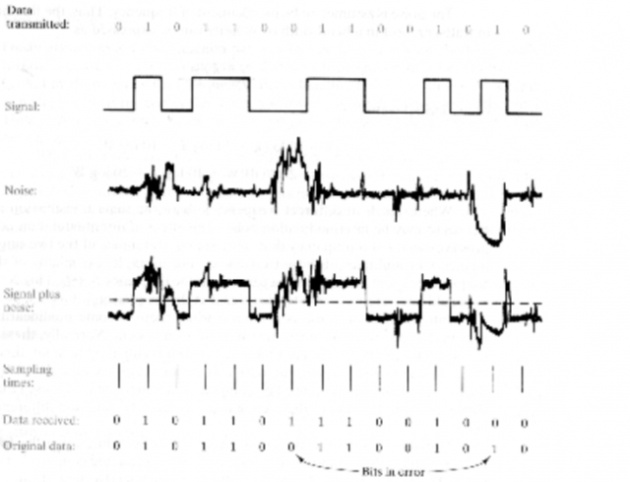Attenuation
n Signal strength falls off with distance
n Depends on medium
¨ Guided medium: reduction in signal strength is exponential, typically expressed as constant number of decibels per unit distance.
¨ Unguided medium: attenuation is more complex function of distance and the make up of the atmosphere.
n Attenuation introduce three considerations for transmission engineers
¨ Received signal strength must be enough to be detected
¨ Received signal strength must be sufficiently higher than noise to be received without error
¨ Attenuation is an increasing function of frequency
n For first two problems use signal strength strong enough to be receive intelligibly and use repeaters or amplifiers
n For third problem use techniques for equalizing attenuation across a band of frequencies.
n Loss of energy to overcome the resistance of the medium: heat
Distortion
n The signal changes its form or shape
n Each signal component in a composite signal has its own propagation speed
n Differences in delay may cause a difference in phase
n Delay distortion occurs because the velocity of propagation of a signal through a guided medium varies with frequency,
¨ Velocity tends to be highest near the center frequency and fall off towards the two edges of the band.
¨ Thus various frequency components o a signal will arrive at the receiver at different times, resulting in phase shift between the different frequencies.
Noise
n Additional signals inserted between transmitter and receiver
n Thermal
¨ Due to thermal agitation of electrons
¨ Uniformly distributed across the bandwidth
¨ Also called White noise
n Intermodulation
¨ when two signals at different frequencies are mixed in the same medium, sum or difference of original frequencies or multiples of those frequencies can be produced, which can interfere with the intended signal
Crosstalk
¨ A signal from one line is picked up by another
n Impulse
¨ Irregular pulses or spikes
¨ e.g. External electromagnetic interference
¨ Short duration
High amplitude
Effect of noise on digital signal




